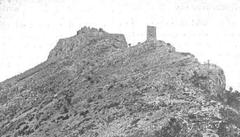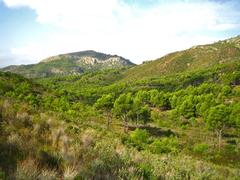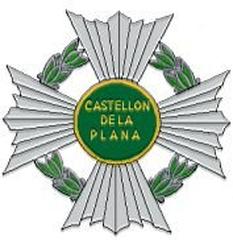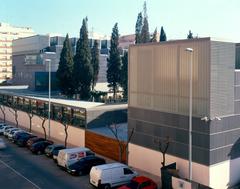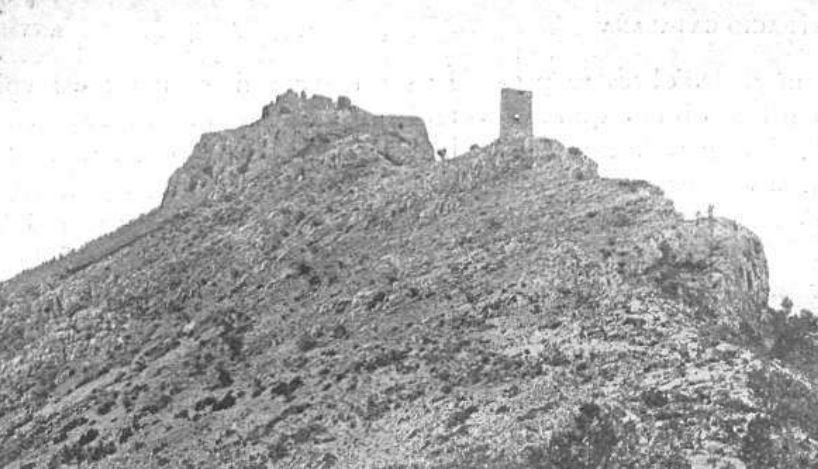
Castell de Montornés: Visiting Hours, Tickets, and Historical Significance
Date: 01/08/2024
Introduction
Nestled atop a picturesque hill in Benicàssim, Castelló de la Plana, Spain, Castell de Montornés is a remarkable site that offers a window into the region’s rich and diverse history. This ancient fortress, whose origins trace back to the 10th century, has witnessed the ebb and flow of civilizations, from Roman foundations to Moorish constructions and Christian reconquests. Its strategic location provided a commanding view of the Mediterranean Sea and the Plana of Castellón, making it a pivotal defensive stronghold through various historical periods (Castell de Montornés). Visitors to Castell de Montornés can explore remnants of its formidable past, including sections of curtain walls, cisterns, and watchtowers. This guide aims to provide comprehensive information on the historical significance, visiting hours, ticket prices, travel tips, and nearby attractions to help you plan an enriching visit to this iconic monument.
Table of Contents
- Introduction
- Historical Background of Castell de Montornés
- Visitor Information
- Accessibility
- FAQ
- Conclusion
Historical Background of Castell de Montornés
Origins and Early History
Castell de Montornés has a rich and multifaceted history that dates back to ancient times. The castle’s origins can be traced to the 10th century when it was constructed as part of a Moorish defensive system. This strategic location was chosen due to its elevation, which provided a commanding view of the surrounding area, including the Mediterranean Sea and the Plana of Castellón (Turismo de Castellón).
The site of Castell de Montornés was not originally developed by the Moors; it was built over Roman remains, indicating that the area had been of strategic importance long before the 10th century. The Roman influence is evident in the foundational structures that the Moors utilized and built upon (Comunitat Valenciana).
The Moorish Period
During the Moorish period, Castell de Montornés served as a crucial defensive stronghold. The castle was part of a broader network of fortifications designed to protect the region from invasions and to maintain control over the local populace. The castle’s design included three enclosures surrounded by a curtain wall, forming a triangular layout with the Torre San Vicente and the Casoleta de Salandó, which were auxiliary structures that enhanced its defensive capabilities (CastillosNet).
The Reconquista and Christian Reinforcement
The Reconquista, a period marked by Christian efforts to reclaim territories from Muslim rule, significantly impacted Castell de Montornés. The castle was temporarily captured by the legendary military leader El Cid in 1094 through strategic deception. This event is part of the rich tapestry of legends surrounding the castle (Turismo de Castellón).
Following the Reconquista, the castle was definitively reconquered by King James I of Aragon in 1233. The Christians not only reclaimed the castle but also reinforced and expanded it to bolster its defensive capabilities. This period saw the addition of new structures and the strengthening of existing ones, ensuring that the castle could withstand future attacks (Comunitat Valenciana).
Medieval Significance
Throughout the medieval period, Castell de Montornés remained a significant military and administrative center. It was inhabited until the 15th century, serving various roles, including as a residence for notable figures such as Ximén Perez d’Arenós and as a property of the Monastery of Poblet. The castle’s strategic importance is underscored by its continuous use and the various enhancements made to its structure over the centuries (CastillosNet).
Decline and Ruination
The exact timeline and reasons for the castle’s decline and eventual ruination are not well-documented. However, it is known that the castle was inhabited until the 15th century, after which it fell into disuse. The decline of Castell de Montornés likely resulted from a combination of factors, including changes in military technology, shifts in political power, and the natural wear and tear of the structures over time (Comunitat Valenciana).
Architectural Features and Remnants
Today, only a few remnants of the once-imposing Castell de Montornés remain. Visitors can still see sections of the curtain wall, cisterns, and two watchtowers. One of the towers is quadrangular and overlooks the valley of Miravet, while the other is cylindrical and guards the cliff behind the castle. These structures, built from limestone, offer a glimpse into the castle’s formidable past (CastillosNet).
The castle’s layout follows the traditional scheme of three consecutive enclosures, each fortified by walls. This design was typical of medieval fortifications and was intended to provide multiple layers of defense against attackers. Despite the limited remains, the site still conveys the castle’s historical significance and strategic importance (Turismo de Castellón).
Cultural and Historical Legacy
The legacy of Castell de Montornés extends beyond its physical remnants. The castle is a symbol of the region’s rich history, reflecting the various cultural and political influences that have shaped Castelló de la Plana over the centuries. From its Roman foundations to its Moorish construction and Christian reinforcement, the castle embodies the diverse heritage of the area (Comunitat Valenciana).
Moreover, the legends and historical figures associated with the castle, such as El Cid and King James I, add to its allure and mystique. These stories contribute to the cultural tapestry of the region and provide a fascinating context for visitors exploring the ruins today (Turismo de Castellón).
Visitor Information
Visiting Hours and Tickets
Castell de Montornés is accessible to the public year-round. The visiting hours may vary depending on the season and local events, so it is advisable to check the latest information from local tourism websites or contact the Benicàssim tourist office directly. Entrance to the site is usually free, but guided tours may incur a fee. For the most current details, visit the Benicàssim Tourism website.
Travel Tips
- Getting There: Castell de Montornés is situated in Benicàssim, which is easily reachable by car or public transport from Castelló de la Plana. There are parking facilities available near the site.
- Best Time to Visit: The best time to visit is during the spring and autumn months when the weather is mild and pleasant. Summers can be hot, and winters are generally mild but can be rainy.
- What to Bring: Comfortable walking shoes, a hat, sunscreen, and water are recommended as the terrain can be uneven, and there is limited shade.
- Guided Tours: Consider taking a guided tour to learn more about the history and significance of the site from knowledgeable guides.
Nearby Attractions
While visiting Castell de Montornés, be sure to explore other historical and cultural sites in Benicàssim, including:
- Torre San Vicente: A watchtower offering panoramic views of the coastline.
- Aqueduct of Benicàssim: A well-preserved Roman aqueduct that highlights the engineering prowess of ancient Rome.
- Benicàssim Beach: A beautiful beach perfect for relaxing after a day of exploration.
Accessibility
Castell de Montornés is partially accessible to visitors with mobility challenges. The terrain can be rugged, and some areas may be difficult to navigate. It is advisable to contact the local tourist office for detailed accessibility information and assistance.
FAQ
Q: What are the visiting hours for Castell de Montornés? A: The visiting hours vary based on the season and local events. Check the Benicàssim Tourism website for the most up-to-date information.
Q: Is there an entrance fee for Castell de Montornés? A: Entrance to the site is generally free, but guided tours may have a fee.
Q: Can I visit Castell de Montornés year-round? A: Yes, the site is accessible year-round, though it is best to confirm visiting hours before planning your visit.
Q: What should I bring when visiting Castell de Montornés? A: Comfortable walking shoes, a hat, sunscreen, and water are recommended.
Conclusion
While Castell de Montornés may now be in ruins, its historical significance remains undiminished. The castle’s strategic location, architectural features, and storied past make it a compelling destination for those interested in the history and heritage of Castelló de la Plana. Visitors to the site can not only enjoy the breathtaking views of the surrounding landscape but also immerse themselves in the rich historical narrative that the castle represents (Comunitat Valenciana).
References
- Comunitat Valenciana, 2023, source url
- Turismo de Castellón, 2023, source url
- CastillosNet, 2023, source url
- Benicàssim Tourism, 2023, source url
- Champion Traveler, 2023, source url
- Comunitat Valenciana, 2023, source url
- Spain.info, 2023, source url
